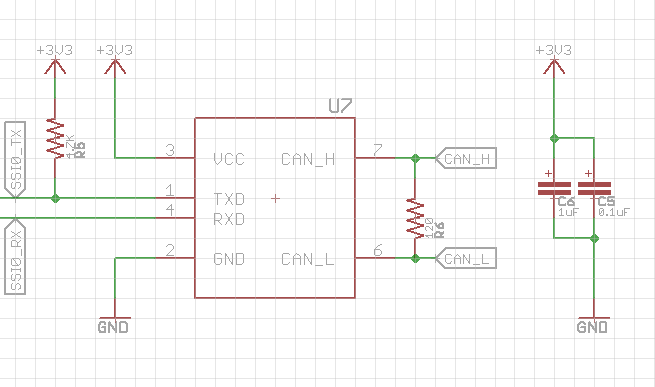Hi,
I'm trying to put a few F28M35 concerto devices on a CAN bus. I'm looking at using the SN65HVD232 transceiver for this. Below is my schematic for one of the devices (this is repeated 4 times for the 4 concerto devices):
The traces CAN_H and CAN_L are all connected together on a single PCB. The entire length of the bus will probably be around 20-25 inches maximum.
The SSI0_RX and SSI0_TX lines are directly going to those corresponding GPIO on the Concerto devices.
Does this look correct? Is there anything I should look at or be careful of specifically? The PCB that most of the bus will be routed on is a 2-layer board. I'm not looking at very high bauds for the canbus (1MHz would be faster than I need) so can I get away with that?
Thanks,
Aditya


